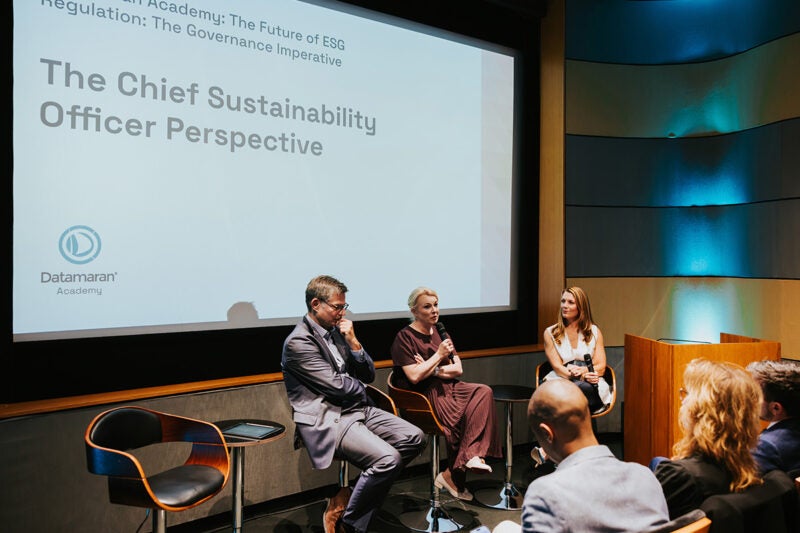4 takeaways from Climate Week 2024

By Niki King, Chief Sustainability Officer
As I reflect on another Climate Week come and gone, I’m left with a renewed sense of urgency and focus on action. Every September, this annual gathering in New York City brings together thousands of the best minds in sustainability to discuss what keeps them up at night, where they’re struggling, and what motivates them to keep pushing forward. With so many challenges confronting society today, I was encouraged to see so many leaders and organizations in the trenches championing solutions for climate action, biodiversity, environmental justice, and more.
The themes I heard throughout the week offered a valuable pulse check on what our peers and partners are thinking about right now. Here are some of those learnings:
- ESG gets a reality check.
There was a noticeable shift from organizations vocalizing aspirational commitments to focusing on a holistic action plan to achieve net zero. This doesn’t signal migration away from climate goals, but instead a heightened concentration on understanding what it will take to get there, including investments and partnerships with key stakeholders in the value chain. Decarbonization is a key ESG focus area for many companies, coupled with the need for a solid transition plan for all stakeholders that illustrates business value and operational resilience they can expect as a result.
- Breaking silos is the key to mitigating risk and unlocking value.
Fluency across corporate governance, finance, legal and compliance is essential for unlocking the business value of sustainable practices. Discussions with organizations across a wide spectrum of sectors highlighted that ESG reporting goes beyond traditional financial reporting by incorporating critical elements like cost avoidance, risk mitigation and long-term value creation.
I’m proud to say that work is well under way at Clorox as we’ve embedded ESG into our corporate IGNITE strategy to provide insights into resource efficiency, reputation management, and regulatory compliance so that we can better identify risks and opportunities that don’t appear on a typical balance sheet. By fostering collaboration across departments, companies can move beyond short-term gains to embrace a more holistic, forward-looking perspective that positions them for sustainable growth and resilience.
- The regulatory landscape continues to shift dramatically.
As someone who’s spent the majority of my career in the sustainability space, I can confidently say that I’ve never seen anything like the regulatory push we’re witnessing today. With increasing regulations around climate action — up approximately 155% in the last decade — businesses discussed the importance of staying ahead of policy changes and actively engaging to shape climate policy.
New framework developments from CDP, The GHG Protocol and The Taskforce on Inequality and Social-related Financial Disclosures (TISFD), alongside the EU’s Corporate Sustainability Reporting Directive (CSRD) and similar global initiatives, are ushering in a new era of corporate accountability and transparency. The tension between voluntary and required reporting is growing, as are the calls for alignment, convergence and more consistent reporting across companies. There is still a long way to go before we can expect truly cohesive guidance for reporting, but I’m optimistic about the momentum we’re seeing to drive meaningful action.
- There’s cautious optimism for AI opportunities in climate.
The role of technology in the fight against climate change was a hot topic throughout the week. Whether used for traceability and transparency in supply chains, or to improve energy efficiency, AI was lauded by many as a silver bullet in addressing several ESG-related issues. Others, however, voiced concerns about the subsequent surge in energy consumption in an already energy-stressed world. As businesses increase adoption of AI, it’s clear we must remain vigilant about the carbon footprint of this powerful tool and plan accordingly to address the resource demands created by its use.




